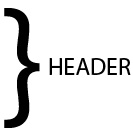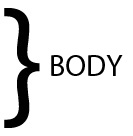How to write a Business Letter
How to Write a Business Letter?
Before you start writing a business letter, it is important that you know its Formats.
Business Letter Formats
Full block style
|
Your Name Date
Reference or Subject (optional) Dear Recipient (Salutation) First Paragraph – Introduce yourself and the topic at hand Second Paragraph – Details of the topic at hand Third Paragraph – Intimation for any further communication and so on.
Subscription – Thanking you, yours sincerely etc. Signature CC (as required) stands for Carbon Copy, it means the same copy has been sent to one or many people |
Semi block style
|
Your Name Date Reference or Subject (optional) 1st Para* – Introduce yourself & the purpose 2nd Para* – Details regarding the matter at hand
Subscription – Thanking you, yours sincerely etc. Signature ENCL (optional) stands for ‘Enclosure’ which can be any related attached documents |
*Indented
Modified block style
|
Your Name
Reference or Subject (as required) Dear Recipient (Salutation) 1st Paragraph (aligned left) – Introduce yourself & the matter in focus 2nd Paragraph (aligned left) – Details of the topic at hand 3rd Paragraph (aligned left) – Intimation for any further communication and so on
Subscription – Thanking you, yours sincerely etc. Signature ENCL (optional) stands for ‘Enclosure’ which can be (Closing should be positioned to the right) |
Business Letter Writing Tips
How to Start a Business Letter – A basic business letter follows the OFAC Rule. OFAC stands for Occasion, Facts, Action, Closing. Start a business letter by addressing the Recipient. It is also known as Salutation which includes addressing gestures like Dear Sir, / Madam.
Business Letter Salutation or Opening Salutations Rules
- It is unprofessional to use only the First Name of the person unless you have an informal relationship with the addressee, e.g. ‘Dear Samantha’ Salutation requires a Comma at its end - Dear Mr. Ronald Ross,. If the letter is informal Colon is used at its end - Dear Mr. Ronald Ross:
- If there are Multiple Recipients you have to use ‘Dear Sirs/Madams’.
- If there are only Two Recipients of different Gender, you have to use ‘Dear Mr. Tulli and Ms. Puri’.
- If the Multiple Recipients are consist of both Gender, use ‘Dear Sir(s), Gentlemen and Madam(s)’, using the ‘S’ as per se.
- If you don’t have the name of the recipient, simply write, ‘Dear Sir/Madam’.
- If the last name or the title of the recipient is known, write the same, e.g. – ‘Dear Dr. Singh’ or ‘Dear Personnel Director’
- If you don't know the recipient's name or gender, use ‘To whom it may concern,’ ‘Ladies and Gentlemen’ or ‘Dear Sir or Madam’.
- If the recipient's gender is unclear or not known from his/her name, simply type the whole name, e.g. 'Dear Jamie Fox’.
- Use Ms for women unless asked to use Mrs or Miss.
- ‘Miss’ is meant for an ‘Unmarried Woman’, ‘Mrs.’ Is meant for a ‘Married Woman’ and ‘Ms.’ Is meant for a woman whose marital status is not known to you.
- For a basic and short business letter, Salutations are not necessary, you can start with subject in capital letters.
Reference
After the salutation, you can use Reference if required. You can refer a previous meeting, specific conversation or other contact means. Examples - With reference to our previous correspondence dated ...., your advertisement, your phone call yesterday etc.
Motive
If reference isn’t applicable or this is your first letter to a person you can straightaway mention the agenda for writing. If you are not known to the recipient you also have to introduce yourself
You can start with these lines:
- I wrote to inquire about, apologize for, confirm, comment on, apply for etc.
- I would be delighted to
- I am in this business for.......
- Unfortunately
- I am afraid that
Business Letter Head – Always use a letter head to write a business letter. If you don't have pre-printed letterhead, you can type your name/designation, title and return address four to six lines down from the top of the page.
Business Letter Spacing – All business letters are supposed to be Single-Spaced, with Double Spaces between the different parts of the letter and between Paragraphs.
Starting from the Top:
- Spacing between Addresses - Leave One Single Line Space between Sender's Address and Recipients Address
- Spacing Salutation – Leave One Single Line Space after the Recipient's Address and then write Salutation
- Spacing in Paragraphs – Leave a Single Line Space between each paragraph
- Spacing in Closing – Leave a Single Line Space after the last Paragraph and then start the closing the letter. Closing with ‘Sincerely’, or ‘Thanks’, is to be followed by Four Single-Line Spaces. After the Four Spaces, type your Name and Title. The space above your typed name and Title is left for your Signature.
Be Specific and Brief – Come to the point or agenda at hand, don’t meander here and there. Officials don’t have much time in their hands, they want brief and specific information. They shouldn’t need to search for the required information. Don’t give your comments in the first paragraph. Mention the purpose of the letter in the first paragraph itself. Give information in a serial wise manner.
Short and Simple – Business letters don’t have any tales to tell, they have to short and simple. Mention the matter to be addressed without weaving any story around it. You should know what exactly the recipient requires and provide that in an easy to understand manner. Mention the purpose before moving onto other aspects.
Courtesy – Courtesy doesn’t mean writing the Salutations, it also means that you consider the recipient worthy of importance. Even if you are addressing a false claim or improper complaint, don’t use any harsh words. Be reasonable, cordial and use a formal language to address the letter. Don’t use any slang or double meaning words. Fold the letter into thirds, such that you unfold the top flap, then the bottom flap. This shows an official etiquette on your part.
Interactive Language – Don’t be too technical or too formal as you are addressing a letter to a person and not just an organisation. Be interactive but not by using colloquial language. Your letter should be fashioned in a way to foster relationship, by offering your help, advice, confirmation or any requirement which is essential to show the recipient the care and respect he seeks.
Typing and Printing – Business letters are supposed to be written in commonly used fonts such as Arial or Times New Roman. Don’t use fancy fonts which you might be able to read but the other person may not. Use the proper size of font to suit the need in lieu of paper size. For writing on envelope, you can use the printer. Place the envelope in your printer and give the print command on the address mentioned in your word processor.
Typed not Handwritten - Make sure that you type the letter. It should not be handwritten. Handwritten letters are unprofessional in business environment. Typed letters are spaced, aligned and have a uniform structure. This makes them easy to read.
How to End a Business Letter – The last paragraph of a business letter is meant for summarising the whole letter with outline providing a Call for Action or whatever you expect. After the conclusion, a Salutation is to be used. Never use Bye, Bye Bye, See You etc. It is unprofessional to do so.
Formal Closing Salutations - Closing business salutations should match the tone of the letter. A formal salutation is polite, courteous and respectful to the recipient.
Common formal salutations are:
- Sincerely or Yours Sincerely
- Respectfully Yours’
- Faithfully Yours
- Yours Truly
Informal Closing Salutations – Less formal salutations are informal salutations are used to show courteous and professionalism.
Depending on the tone of the Informal Business Letter, use:
- Best Regards
- Best Wishes
- Kind Regards
- Kind Thanks
- Many Thanks
- Thanks
- Thank You
- Truly
- With appreciation
- Warmest Regards
Enclosure – Often types as ENCL, is stands for ‘Enclosure’. Enclosure means any accompanying document along with letter.
You can use the below given lines for enclosure:
- I am enclosing
- Enclosed you will find
- Please find enclosed
Proofreading – Proofing a letter means to read the letter to see any errors. Sound is as important as Sight. If you miss out any mistakes you can rectify them reading aloud to yourself. Spell check your letter, edit the errors, sometimes we miss out the mistakes as certain words like ‘Form’ and ‘From’ may sound valid to spell check. Depending upon the client you may need to spell check it as per the English form in various regions.



